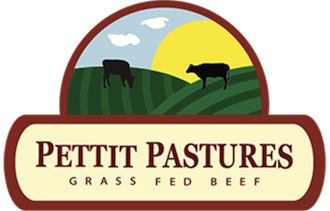Farm Pollution
NOAA scientists are reporting that this summer’s dead zone in the Gulf of Mexico, at the mouth of the Mississippi River, is the largest ever recorded – 8,776 square miles. That is approximately the size of the state of New Jersey.
The dead zone occurs because excessive nutrient pollution (particularly nitrogen and especially phosphorous) causes algae blooms that deplete oxygen in the water to levels below what is needed to support marine life.

Most of the nitrogen and phosphorous in the river is the result of runoff from farm fields that are tilled and over-fertilized. And what is grown in most of those fields? Corn and soy beans. The huge swaths of tilled land dedicated to growing monocrops of corn or soy beans, year after year, require lots of chemical fertilizers to maintain yield. Excessive runoff and downstream pollution are the result.
In the US, 40 percent of corn and 70 percent of soybeans grown annually are used to feed livestock. The majority of those livestock are being raised in feedlots, also known as CAFOs (Concentrated Animal Feeding Operations ). CAFOs are completely dependent on corn and soy beans brought in from outside farms.
Long term overstocking of animals on any piece of land always creates a manure (excess nutrient) problem. The nutrients in the excess manure, run off into waterways and eventually the Gulf of Mexico, adding to the dead zone. CAFOs are an extreme case of overstocking.
Alternatively, imagine if those corn/soy bean fields were grassy pastures and the animals in those CAFOs were moved onto those pastures. The picture changes completely. The manure gets spread naturally by the animals rotating through pastures and improves the soil fertility and improving the water cycle on the land. It also eliminates the tilled soil with chemical fertilizers that are subject to runoff. The best part is that the end result is healthy Grass fed beef, which is far more nutritious than beef raised in a CAFO.
That was pretty much the way things were 75 years ago. Small local farms were prosperous. Water pollution from farming was minimal. People were healthier with fewer diet-related diseases.
Now you may be thinking that Minnesota is a long way from the Gulf of Mexico, but remember many of those rivers, including the Mississippi start right here in Minnesota. Unfortunately, the pollution problem also starts right here as well.
As of 2016, two-thirds of Minnesota watersheds had been tested for pollution and 40 percent of Minnesota rivers and lakes have been found to be impaired by farm runoff, bacteria, mercury or other pollutants.
Pettit Pastures is an example of how farms can work to improve the land and water quality by responsibly raising healthy meats. We have worked to improve our soil health and the water cycle on our farm. By reducing chemical use and rotationally grazing cattle, we have increased the carbon and organic matter in our soils. This increases the efficiency of the water cycle and virtually eliminates runoff on our farm. This summer, the NRCS tested our rotationally grazed pastures and found that even with a one and a half inch rainfall event our pasture absorbed all the water and had zero runoff.
If consumers transition to buying pastured meats from local responsible farmers, change will occur naturally through market forces. Consumers have a tremendous amount of power. Every time you purchase food for your family you are voting with your wallet. Choosing conventional raised beef from a CAFO perpetuates the status-quo. When you choose Grass Fed Beef from a local responsible farmer, you are helping to reduce the pollution of our waters and you are supporting local farmers who care about their land, their animals, and the food they produce.

